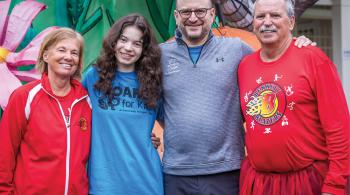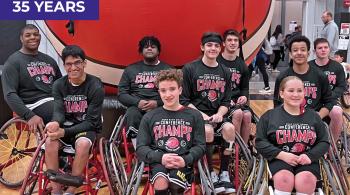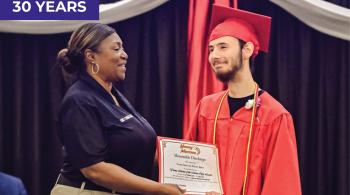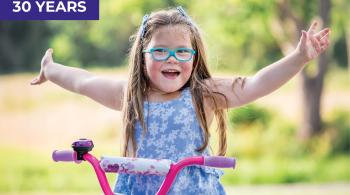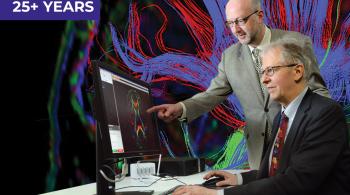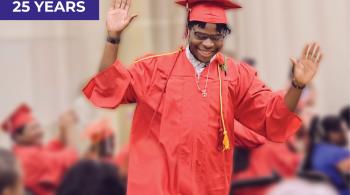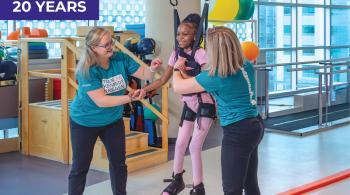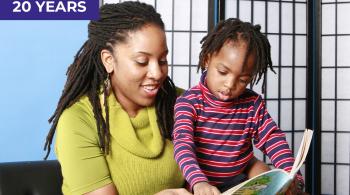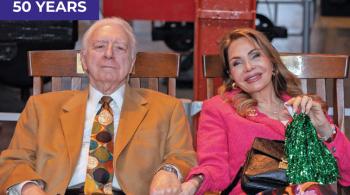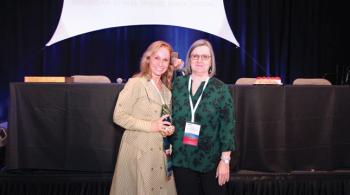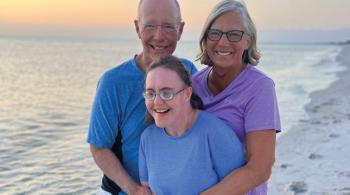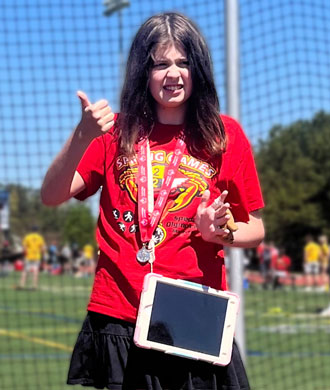
Annie with her augmentative and alternative
communication device (photo by Charles Collins)
By Laura Farmer
Like many 16-year-old girls, Annie loves to shop. Her mom, Melissa, recalls one day when they were driving past the exit to the local mall, Annie urged her to stop at her favorite store. But there was something special about this request: Annie is autistic and nonspeaking, so she made her wishes known through an augmentative and alternative communication (AAC) device.
Annie has learned to communicate through her device thanks to the support and expertise of Kennedy Krieger Institute’s Assistive Technology Clinic, where speech-language pathologists and occupational therapists use innovative technologies to help patients with a variety of communication, learning and mobility needs.
“Kennedy Krieger has been amazing, especially [speech-language pathologist] Laura Dickerson,” Melissa says. “Annie is not fluent with her device yet, because it takes years of modeling how to use the device, just like learning a new language. But we have been working with Laura to expand Annie’s use of the device.”
The work is paying off. Annie was recently able to use her device to share that she felt sad. The moment was a breakthrough, as it meant Annie had advanced from requesting tangible things like food to communicating intangible things like emotions.
“It’s incredibly rewarding to witness a client realize, ‘Wow! I can finally say some of these things I have always wanted to communicate,’” says Lauren Tooley, assistant director for speech-language pathology and assistive technology at Kennedy Krieger. “We have seen parents in tears when their child is finally able to say, ‘I love you’ or ‘Mom.’ Giving someone the tools to communicate is incredibly powerful.”
Expanding Accessibility
Clinic staff members evaluate first-time patients to determine which devices will best meet their needs. Then, they guide families through acquiring and using the devices, which fall into four main categories: power mobility, adapted computer and phone access, adapted reading and writing supports, and AAC.
We have seen parents in tears when their child is finally able to say, ‘I love you.’” – Lauren Tooley
The clinic works with families to obtain insurance coverage for their devices and share resources that can help when devices are not covered. The Institute offers some grant-based funds and a lending library of devices. School-aged patients may be able to get their devices through school, and the Maryland Technology Assistance Program provides low-interest loans for families.
For Annie’s family, her AAC device is priceless.
“When I see children who struggle with language and don’t have another form of communication, it's very difficult for me because I know there is help available,” Melissa says. “I want families to know that if their child struggles with communication, they can reach out to Kennedy Krieger’s assistive technology program. They really can help!”

